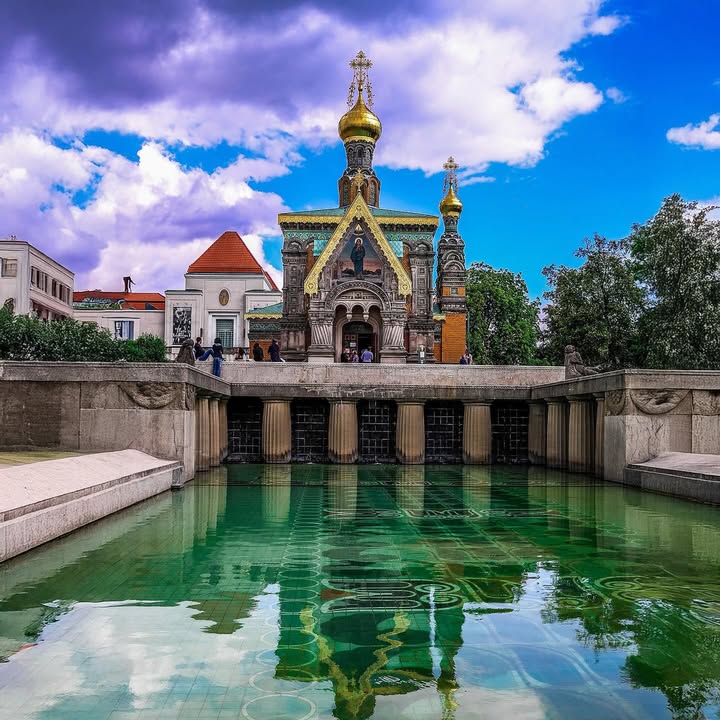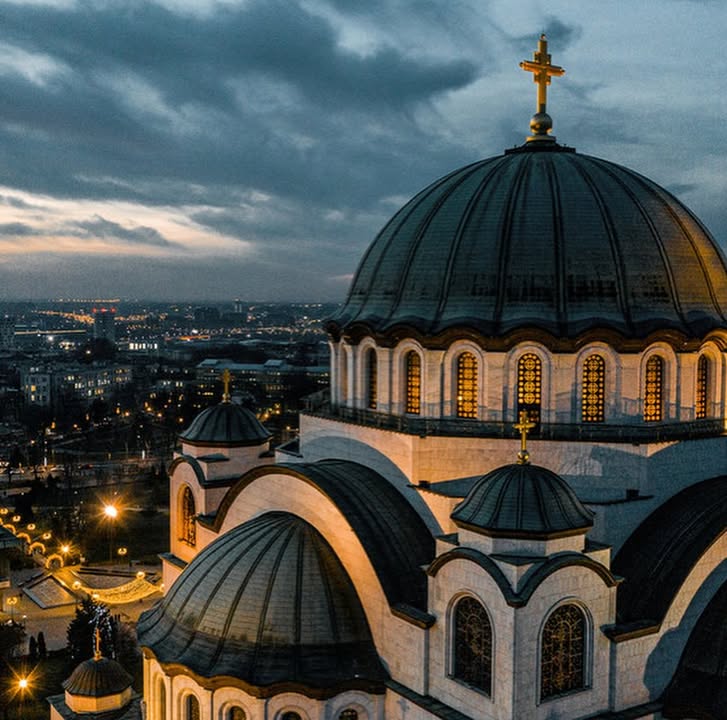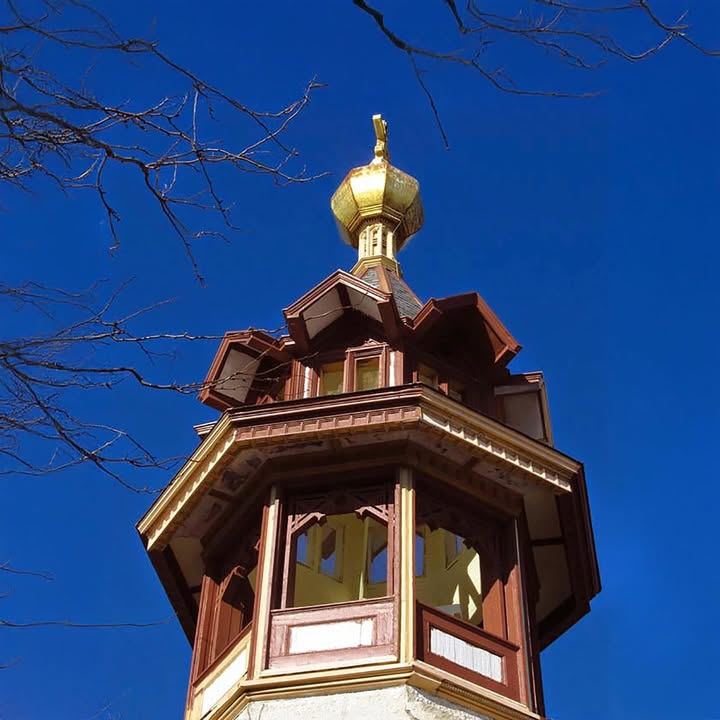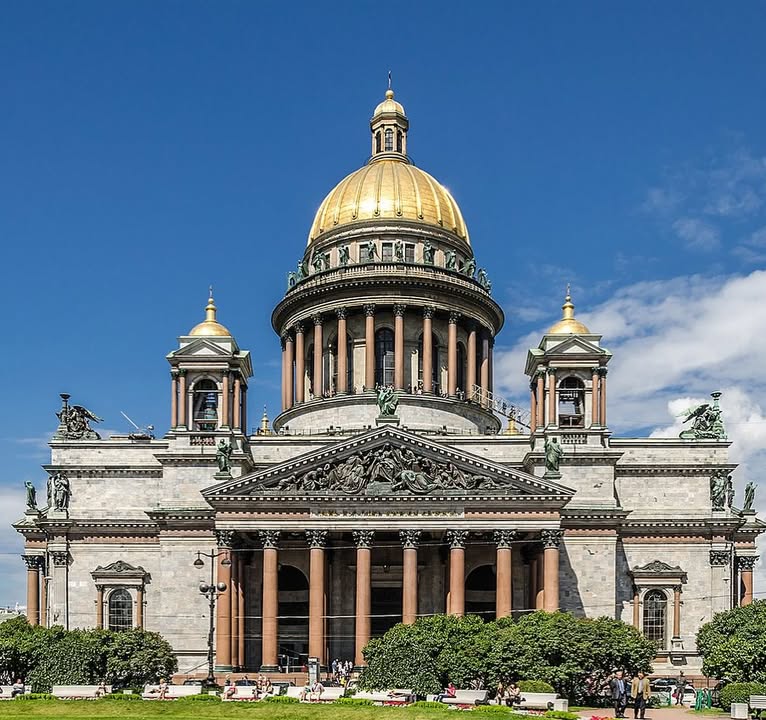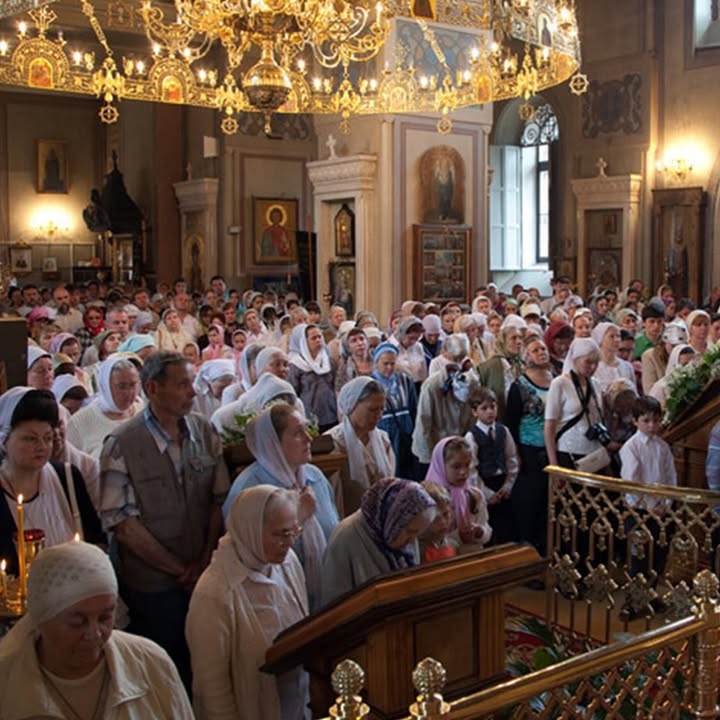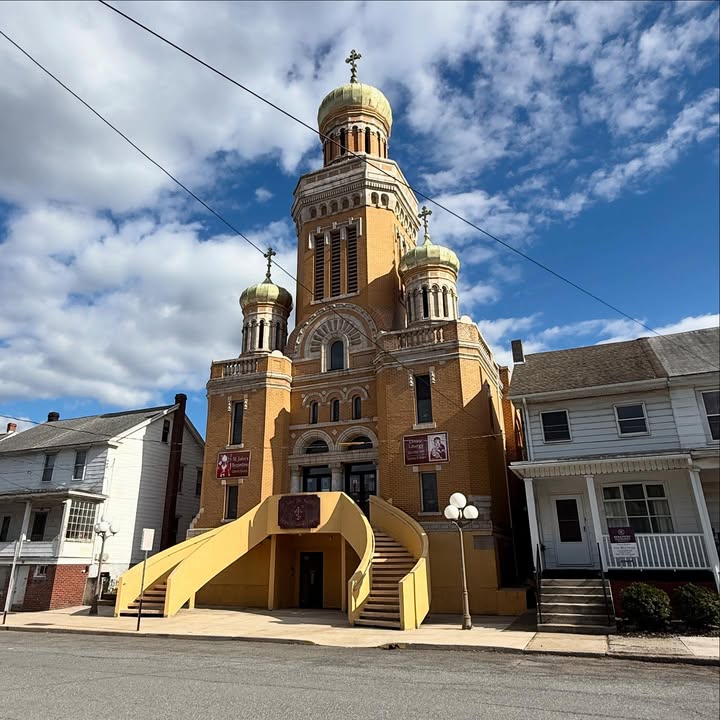There’s a quiet corner in Darmstadt, Germany, where something truly…
There’s a quiet corner in Darmstadt, Germany, where something truly unexpected rises from the landscape—the Russian Chapel of St. Mary Magdalene. With its golden onion dome catching the light and mosaics glowing like stained glass, it feels like a fragment of Russia, lovingly placed in the heart of Europe.
Built in 1897–1899 for Tsar Nicholas II and his wife, Alexandra Feodorovna (born in Darmstadt), this tiny chapel was more than a private sanctuary—it was a love letter, a slice of Russia rooted in foreign soil. Literally. They brought earth and stone from Russia so the foundation would be “truly” Russian.
Architect Leon Benois didn’t hold back. The Neo-Russian style here is bold, even theatrical—gleaming domes, arched gables, colorful ceramic tiles. By the end of the 19th century, this style had come roaring back, exaggerated and proud. It took over everything—architecture, fashion, painting—setting the stage for Art Nouveau’s sweeping curves and symbolism.
As an architect and someone who works with Orthodox churches, this chapel spoke to something deep in me. A longing. A reminder that beauty rooted in tradition can still feel electric. That faith, art, and memory can survive borders—and even time.
#RussianChapel #Darmstadt #HiddenGems #NeoRussianStyle #ArchitecturalHeritage #OrthodoxChurch #TsarNicholasII #LeonBenois #ArtNouveauRoots #CulturalRevival #OnionDomes #MosaicArt #OrthodoxAbroad #ArchitectureWithSoul #Molodin #AleksandrMolodin #OrthodoxInGermany #HistoryInStone #LoveLetterInBrick









